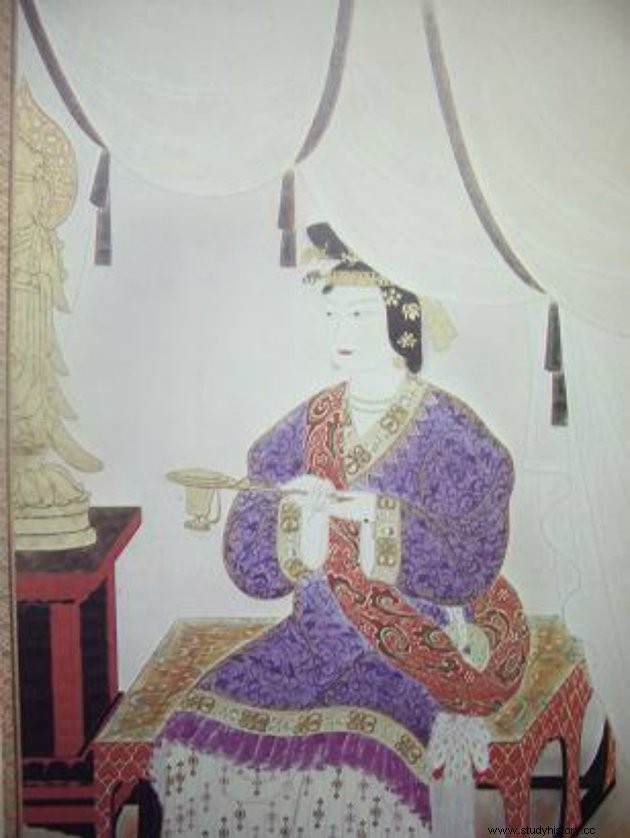Empress Suiko (推古天皇, 554-628) was the first female Empress of Japan, the 33 th sovereign in the traditional order of succession.
Daughter and wife of an emperor
 Daughter of Soga no Kitashi-hime and Emperor Kimmei, Suiko was born on January 15, 554 as of Princess Nukatabe. According to Nihon shoki (Chronicles of Japan ), his father is the 29
th
Emperor of Japan according to the traditional order of succession. He will have sixteen sons and nine daughters by six different wives; Nukatabe is her ninth child.
Daughter of Soga no Kitashi-hime and Emperor Kimmei, Suiko was born on January 15, 554 as of Princess Nukatabe. According to Nihon shoki (Chronicles of Japan ), his father is the 29
th
Emperor of Japan according to the traditional order of succession. He will have sixteen sons and nine daughters by six different wives; Nukatabe is her ninth child.
Kimmei ruled until his death in 571, and his son Nunakura Futotama-Shiki, Nukatabe's half-brother, took the throne as Emperor Bidatsu. Bidatsu marries Princess Hiro Hime, and Nukatabe becomes his consort consort. After the death of Empress Hiro Hime in 576, she became the emperor's official wife. They will have nine children.
Succession disputes
During Bidatsu's reign, tensions crystallized between the Soga clans, from which Nukatabe came, and the Mononobe clans over the subject of the importation and spread of Buddhism in Japan. Upon the Emperor's death in 585, his half-brother and Nukatabe's brother, Emperor Yōmei, ascended the throne.
His reign is short-lived; when he died two years later, a succession dispute broke out between the Soga and Mononobe clans. The Soga clan wins and a half-brother of Nukatabe takes power as Emperor Sushun. Sushun eventually lost the support of the powerful Soga clan, and its leader Soga no Umako had him assassinated in 592. Shortly after, Nukatabe ascended to the throne as Suiko. She becomes the first woman in Japanese history to take on the role of empress regnant; they will be eight to access it, until 1771.
Suiko's Reign
The year following Suiko's accession to the throne, Prince Shōtoku, son of Yōmei, was appointed regent. He and Soga no Umako wield a large part of the political power, but Suiko manages to maintain a certain independence and does not hesitate to sometimes oppose some of his decisions. It was she, in particular, who sent the first embassy to China to renew diplomatic relations with the Sui dynasty. She sends the Emperor of China a letter saying "The tennō (Emperor) of the East salutes the kōtei of the West".
Suiko's reign was also marked by the official recognition of Buddhism in 594, the establishment of the system of twelve ranks organizing civil servant positions around merit rather than descent, and the adoption of a constitution of Buddhist and Confucian inspiration.
Suiko died in April 628 at the age of 74. After a power struggle, a grandson of Bidatsu succeeds him.
